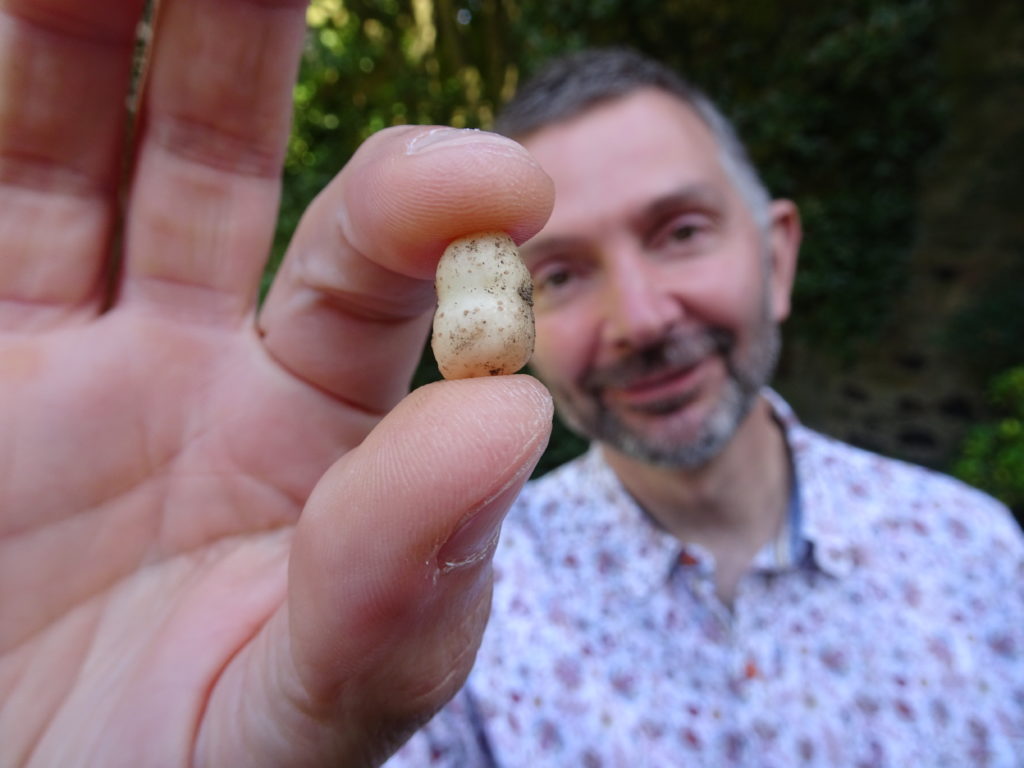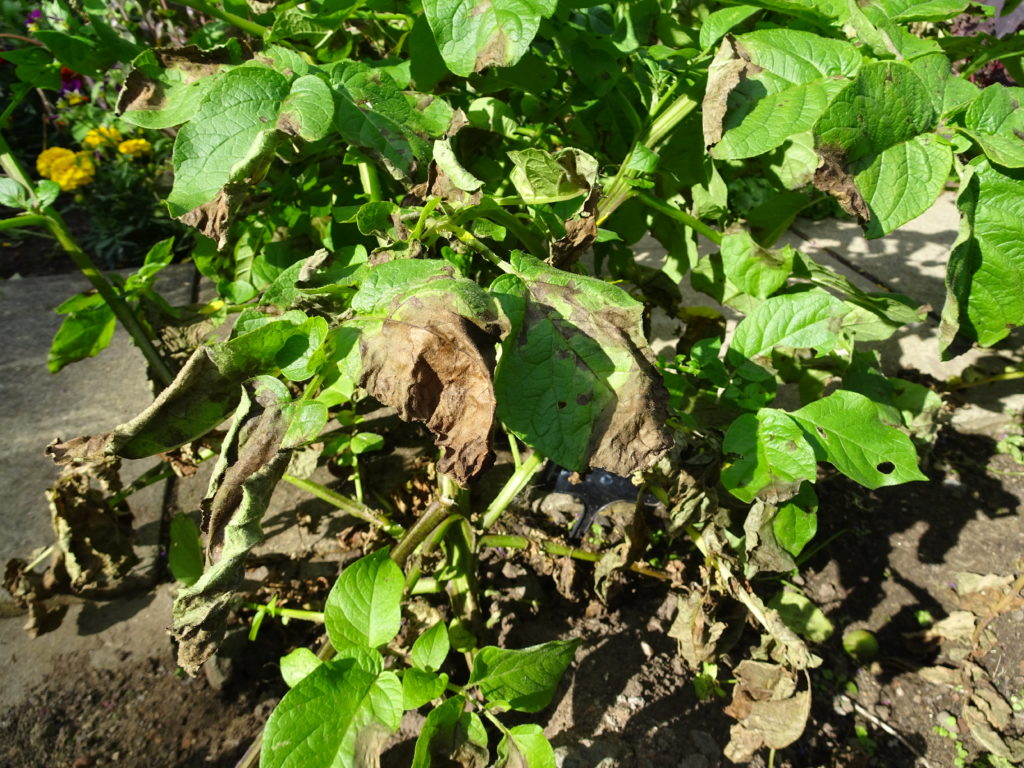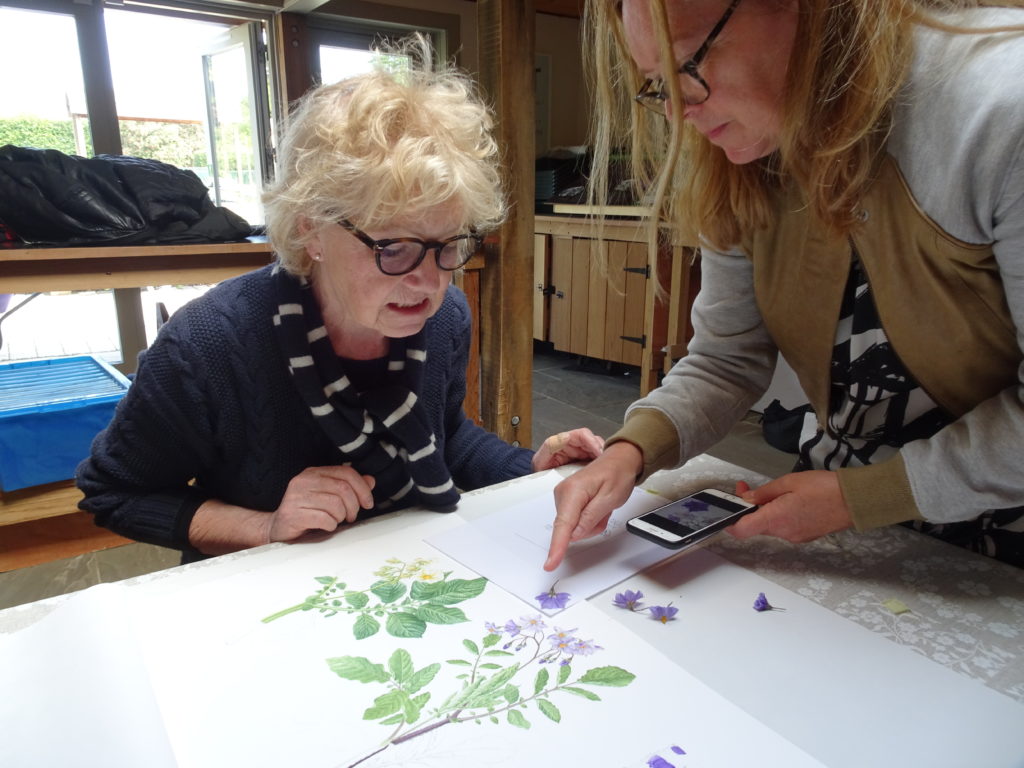The tatties produced by the ‘Edinburgh potato’ were recently revealed to the world on BBC Landward and it’s fair to say this potato is not destined to be appearing in the shops; it is rather small to put it politely. We did not really know what to expect, but were hopeful of digging up potatoes about the size of walnuts based on earlier reports.

However, size is not everything and our special tattie has actually played a key role in the improvement of the potato. The Edinburgh potato is the offspring of a cross between the cultivated potato and a Mexican wild potato species. We were keen to recreate it because it inherits resistance to the dreaded late blight from its Mexican parent. Late blight contributed to the Irish potato famine of the 1840s and is still causing big losses for potato farmers; estimated at £55 million annually in the UK.

After a lot of ferreting around with a fork we were eventually rewarded with four small tubers, each about the size of a marble. Without a TV chef on hand we improvised an outdoor kitchen, steamed the tiny tubers and dressed them with a little butter. As well as being the ultimate in micro-veg they tasted surprisingly good. Maybe these miniature tatties will catch on and we’ll have Michelin-starred chefs beating a path to the Botanics?
The Edinburgh potato first came to the world’s attention at the Royal Botanic Garden Edinburgh sometime after 1850 and was named after the Garden in 1911 by a French potato expert. Exactly when and how this super spud first arrived at the Garden is still something of a mystery.

The serious point to this story is that useful disease resistance is present in the Edinburgh potato because it has been inherited from a wild relative. The numerous wild potatoes out there offer all sorts of possible solutions to agricultural problems. In the case of the Edinburgh potato further breeding can produce disease-resistant potatoes that reach the size we expect. The useful genes contained in wild plants make it essential that we maintain and understand wild plant diversity, particularly among the relatives of our crops. In this way we have the means to breed more resilient crops and secure our food supply.
The full details of the process of recreating the Edinburgh potato are published in Sibbaldia: The International Journal of Botanic Garden Horticulture issue 19 available to download here.
For an interview on this story listen to the first item on BBC Radio Scotland’s Out of Doors broadcast on 2 November.
